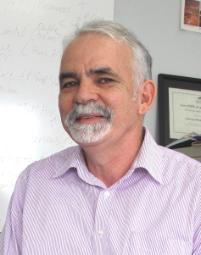Cryle pays tribute to builder of 'the Victorian internet'
Published on 05 December, 2011
CQUniversity's Professor Denis Cryle had a national audience recently when he paid tribute to Sir Charles Todd, builder of the Overland Telegraph Line, which linked the Australian continent via Adelaide and Darwin to the international telegraph routes...

Professor Denis Cryle who featured on Ockham's Razor recently
LINK HERE for Professor Cryle's discussion of 'Science and communication in the information age' on ABC Radio National's Ockham's Razor program.
Presenter Robyn Williams introduces the discussion by saying Sir Charles Todd was equivalent to the instigator of the NBN, wiring Australia.
Professor Cryle notes how the legendary Australian will be remembered next year, the 140th anniversary of the Overland Telegraph's construction.
"It was by any measure a risky and remarkable venture which culminated in the wiring of a continent ... for it changed the speed with which we received information, reinforced distant authority while enfranchising local markets and permitted regular exchanges between the imperial centre in London and the periphery."
Professor Cryle notes that Todd's persistence ultimately helped lay the groundwork for the unification of the Australian colonies in 1901.
"Today communication scholars like myself, are also interested in understanding the international networks forged by the telegraph. Dubbed the ‘Victorian internet' these lightning lines, as James Carey described them, and as James Gleick recently reminds us, were not just about copper insulators and iron poles, but a technology of empire and a portent of modern globalisation."

